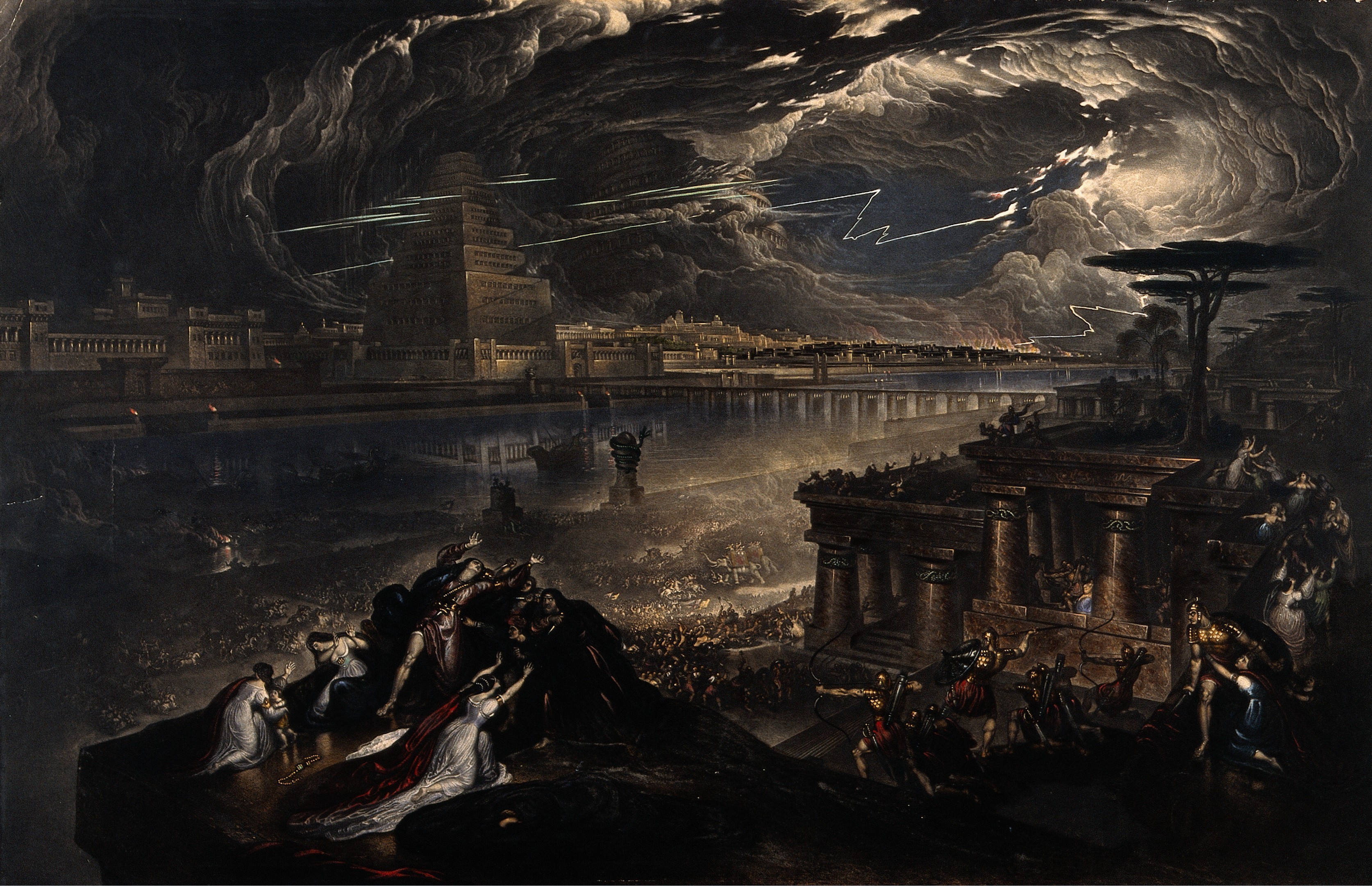
Fall of Babylon
The fall of Babylon was the decisive event that marked the total defeat of the Neo-Babylonian Empire to the Achaemenid Persian Empire in 539 BCE.
For other uses, see Babylonia § The sack of Babylon and ancient Near East chronology.Nabonidus, the final Babylonian king and son of the Assyrian priestess Adad-guppi,[4] ascended to the throne in 556 BCE, after overthrowing his predecessor Labashi-Marduk. For long periods, he would entrust rule to his son Belshazzar, who was a capable soldier but a poor politician. As a result, he was somewhat unpopular with many of his subjects, particularly the priesthood and the military class.[5] To the east, the Persians had been growing in strength under the leadership of Cyrus the Great, who would soon lead a military expedition into Babylonian territory. In October 539 BCE, after the Battle of Opis, the Persian army made entry into the capital city of Babylon. With the success of Cyrus' campaign, Babylonia was incorporated into the Persian realm as a satrapy. As recorded in the Cyrus Cylinder, Cyrus vowed to respect the Babylonian people and also allowed incarcerated peoples to return to their homelands, most notably including the Babylonians' captives from Judah. Consequently, he was viewed as the legitimate successor of the ancient Babylonian kings, and, unlike Nabonidus, rose to become a popular figure in Babylon itself.[2]
Invasion[edit]
In 539 BCE, Cyrus invaded Babylonia. Historical reconstruction of the fall of Babylon to Persia has been problematic, due to the inconsistencies between the various source documents. Both the Babylonian Chronicles and the Cyrus Cylinder describe Babylon being taken "without battle", whereas the Greek historians Herodotus and Xenophon[8] report that the city was besieged. The biblical Book of Daniel notes that the king was killed.
According to Xenophon, Belshazzar was killed in this conflict, but his account is not widely accepted.[9] Nabonidus surrendered and was deported. Gutian guards were placed at the gates of the great temple of Bel, where the services continued without interruption. Cyrus did not arrive until 28/29 October, with Gobryas having acted for him in his absence. Gobryas was then made governor of the province of Babylon.
Babylon, like Assyria, became a colony of Achaemenid Persia in 539 BCE.